Hi all. First of all, I'm not sure how this Polybook thing works, as it doesn't appear to work like normal forum posts. (Or maybe it does!) I've noticed the OP can post multiple entries that seem like added content or journal updates, rather than simply replying to their own post. And then there are comments, specific to each entry... So... hopefully I'll figure this out after I create mine and not end up spamming the forum somehow with multiple polybook posts. Apologies!
Short Bio: [Man, I'd skip it, if I were you. I hate walls of text! Pics are at the bottom]
I started using Blender in August 2020, shortly before my 50th Birthday. It had been decades since I'd done anything really creative and I wanted to start again. Having moved across the ocean from the US to Ireland in 2014, I basically sold off any art and hobby equipment I owned, as I wouldn't have the space for it here, or means to transport it. So, I thought digital art would be a fun new thing to learn and try, and give me some sort of outlet for creative things.
My background professionally has been in TV photojournalism, radio, web design and and several other things. My body is feeling twice my age these days, but I've always tried to learn about new things and keep up with technology. (Either through interest, or professional necessity.)
Although I'm completely new to 3D and Blender, I've been connected to the Interwebz since I had a Commodore 64 and a 1200 baud modem. (My brother ran a BBS) And I've been a gamer since the 1970s.. which meant walking into Aladdin's Castle with a roll of quarters, I guess.
But I never had much interest in computer graphics back then. My only previous attempt at 3d was writing simple text files (OBJ!) to make basic cube buildings for flight simulator scenery with 16x16 pixel jpg textures back in the early '90s.
As a younger person, I did oil painting, pen and ink and some water color, and lots of building kit models, balsa wood projects and other creative things. But "artist" wasn't something that seemed like a wise career choice in the '80s, and I wasn't great at it, so I ended up in the low paying world of broadcasting. :D Jokes aside, I've always liked photography and video, so I went down that path and occasionally did artistic stuff through hobbies (model railroads, building things, painting miniatures or building dioramas.)
So, I decided I wanted to start making things again and doing something semi-artistic at least. I googled 3D software, came up with Blender, and then went on YouTube and searched "blender for beginners". I'm sure you know which doughnut tutorial was the first search result. :D I didn't follow along though, or even download Blender at that point. But it was motivational, and I just watched the series to understand how 3d modeling and texturing was done.
I eventually started with Zach Reinhardt's CG Boost courses in October, and at the same time subscribed to CG Cookie. I let my CGC subscription lapse, but picked it back up again in June of 2021. I really love the structured courses here, and the exercises which help encourage me to actually model stuff and finish projects, rather than just keep watching tutorials on YouTube.
That's not a short bio! (See, I told you to skip it.)
Ever since my BBS days, my internet posts have always end up as chapters, which is why I'm not on Twitter, and I usually resist the urge to post or reply on forums, and instead I just lurk silently. Once I start writing or talking, I find it hard to stop; so I usually try to resist and just stay quiet. My avatar is pretty relevant to my personality on forums, as well as RL. So, apart from posting some pictures of my progress and things I work on, you probably won't see me be very chatty here or in discord.
I do love the fact that CGC has a great community though. That, instructor feedback, and the courses themselves are what keeps me coming back here. Maybe I'll post feedback or offer advice to others some day, (when I figure out what I'm doing, myself!). Until then, thanks to anyone who offers me any feedback to my posts and exercise submissions in the future!
Here's my first attempt at 3D modeling in August of 2020, a week into using Blender:
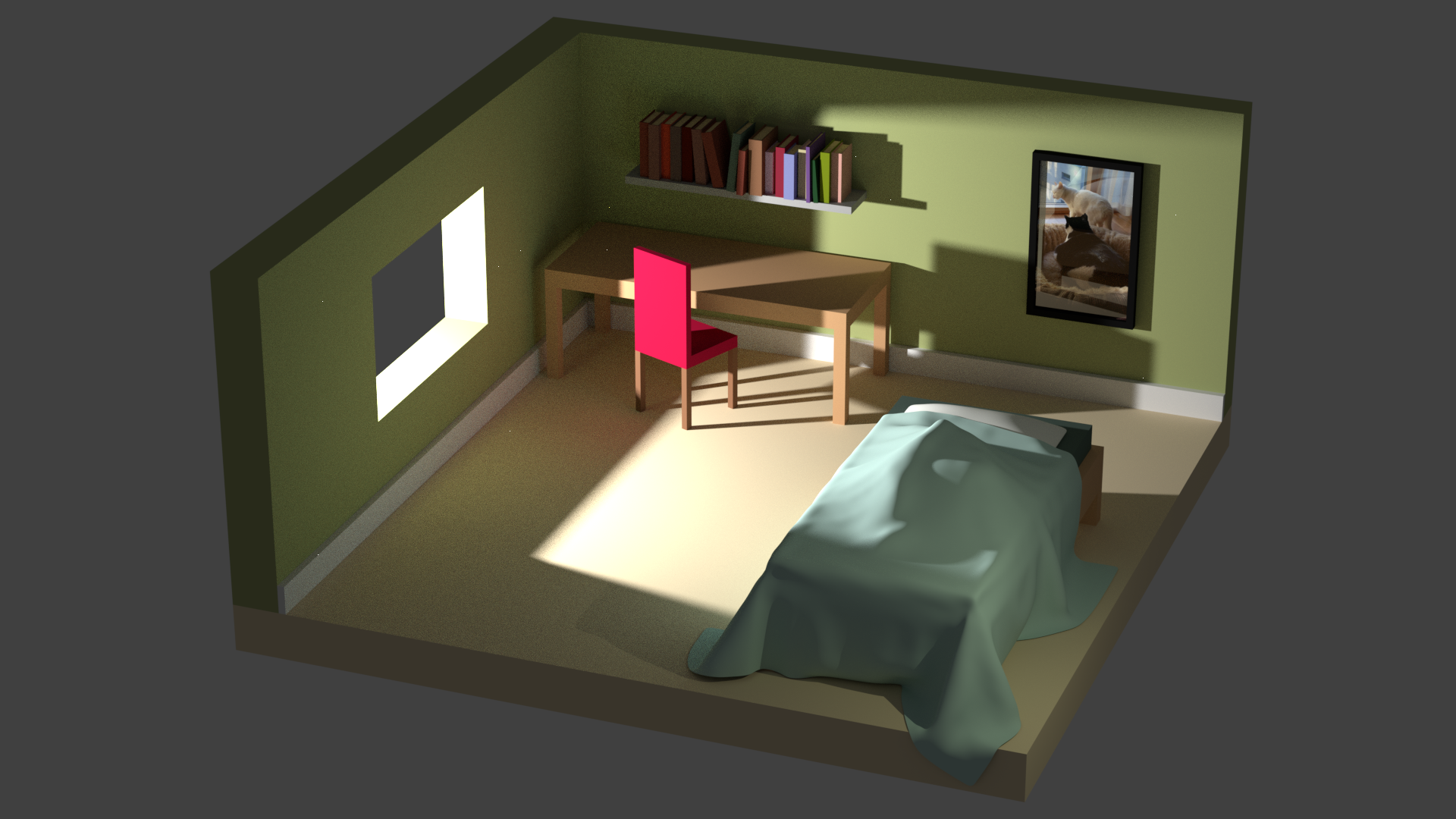
Feels a little embarrassing to share, but I was super proud of it at the time, even though I was just following along to a udemy tutorial. But looking at it brings me good memories of learning Blender for the first time.
About a year later... Here's the most recent thing I modeled, as of October 2021: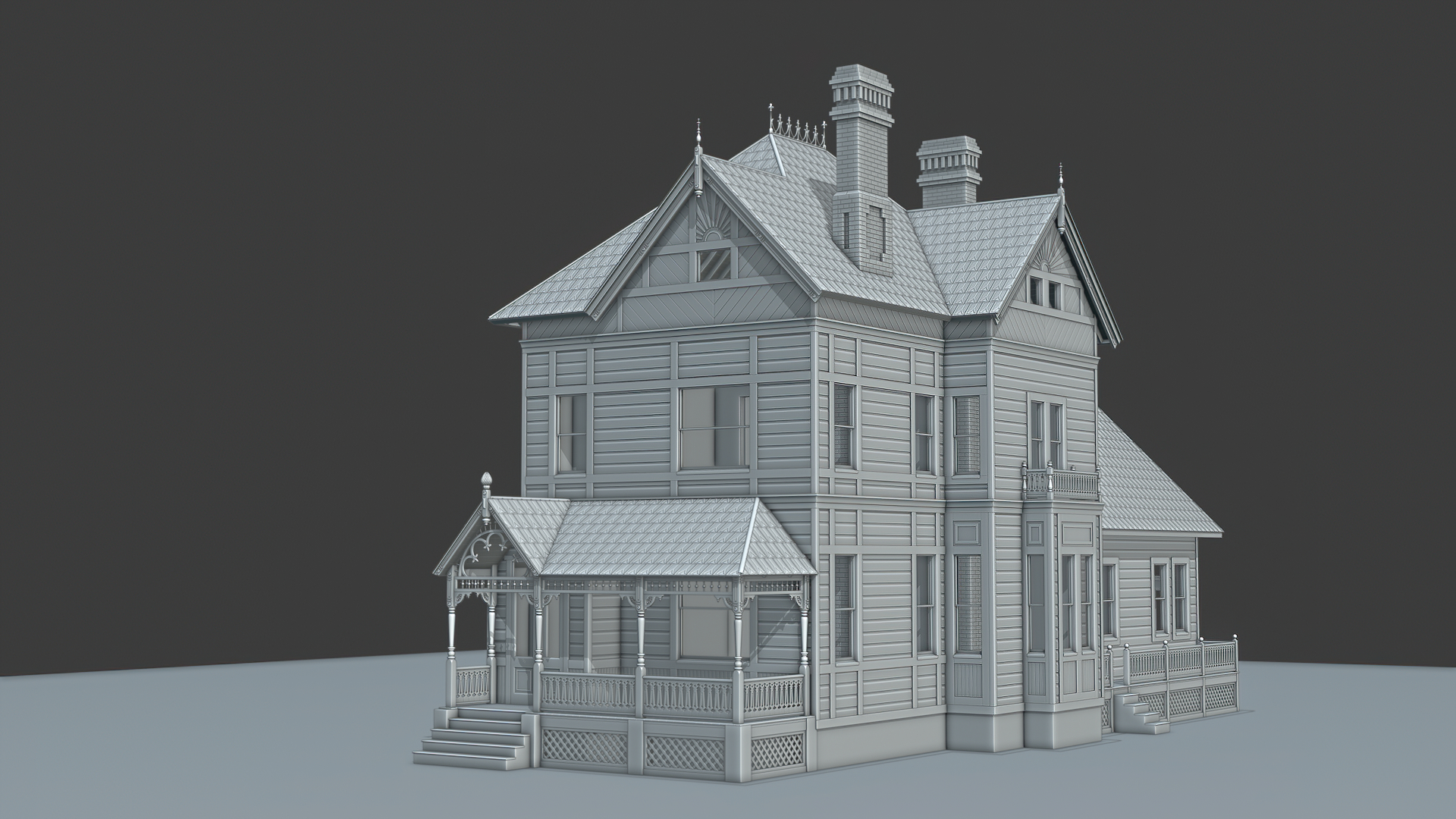
A bit more detail on this one, but I'm still modeling living spaces it seems. :D I'll branch out, at some point. This was my exercise submission for the Mesh Modeling Bootcamp.
Anyway, that's all for now. Hopefully I'll figure out how to add to my polybook to post more of my progress.
Its great to read about your journey, its interesting, especially when you are from the same era as me!
Commodore 64 brings back memories, good ones.
Your doing great with Blender, keep it up, I look forward to seeing more of your progress, and read the short stories that accompany your work. 👍
![]() xapno I very much like this kind of architecture 😀! How long did it take you to create this house?.
xapno I very much like this kind of architecture 😀! How long did it take you to create this house?.
Ye olde 1200 baud modem! I still miss those old modem sounds.
Your progress is absolutely fantastic! Are you going to take the Victorian style house any further (materials, etc) or move on? I'm definitely looking forward to seeing whatever you do next!
Thanks ![]() duerer ! It's hard to say how many hours I spent actually modeling it, but I started around 26th of July; the picture above is the current state as of Oct 9th or so.
duerer ! It's hard to say how many hours I spent actually modeling it, but I started around 26th of July; the picture above is the current state as of Oct 9th or so.
Although I worked on it every day, I got sidetracked a lot by reading old books on architecture, carpentry, joinery and construction methods, or making screenshots or scans of them for reference. And during that time I also spent lots of it making a new spotify playlist that I listened to, for mood music, (of early phonograph recording from the 1890s-1910 or so.)
Then I went down a rabbit hole of reading about various early American vaudeville entertainers and British music hall performers from that era. Completely unrelated of course, but I started getting some inspiration for some future projects because of it. 😀
If I was a normal and more focused person, I think it might've taken me about 3-4 weeks. If I'd only done the exterior part and not modeled the construction/frame or interior... that part might've taken a couple, maybe?
Ye olde 1200 baud modem! I still miss those old modem sounds.
Haha. In the '90s I had a laptop with a faulty phone jack on the built in 56k modem. When the number was dialing, I had to whistle into it to get it to connect!
Are you going to take the Victorian style house any further (materials, etc) or move on?
Thanks for the comments! I mainly did it for the CGC house exercise submission in the course by @jlampel , but I had so much fun modeling it and learning new things, that I decided to build the frame and interior for more practice. It was a great break from strictly following tutorials, which I've mostly done for the past year, so it was nice to model something completely on my own. Along the way, I got lots of ideas for using it in future projects, or expanding on it somehow. I definitely want to bake all the high poly details to a lower poly object and then texture it in Substance Painter or Blender. It's also a great excuse for me to make some other assets that I use to decorate it, like furniture or vegetation/landscape stuff.
I got it to that point just to submit the exercise, but I'm already missing working on it and want to jump right back in to continue it. But I kind of want to take a short break and do a few new tutorials and start on Jonathan's new Pothead course. I'll definitely be adding more to it, though. I put a few pics so far in my gallery, and I'll post some pictures here of any future updates.
![]() xapno Thank you for your answer 🙂! Reading also about other art forms (as e.g. music) from that era I think also helps grasping the spirit of that time and surely influences your work. I'm looking forward to how this will further develop😀!
xapno Thank you for your answer 🙂! Reading also about other art forms (as e.g. music) from that era I think also helps grasping the spirit of that time and surely influences your work. I'm looking forward to how this will further develop😀!
TL;DR: I built a staircase for the house, designed the grill in Inkscape, and modeled draped cloth in Marvelous Designer.
Lately I've been working on the main staircase for the house, which involved reading lots of books - circa 1850-1900 - on stair construction. There's so much mathematics and geometry involved; the books make for some dry reading and I've always been terrible at math. Still, I'm striving for accuracy for the time period.
Here's something I learned: Always plan out your staircase rise/run and dimensions before you finalise your floorplan! The original floorplan drawing (from 1884) that I based this house loosely upon, showed a straight flight of stairs in the front hall, but it was impossible to actually fit it.
So, I altered my floorplan slightly, and designed some double winder stairs which fit perfectly.
Here's the staircase structure, parented to an empty which makes it easy to keep track of all the parts.
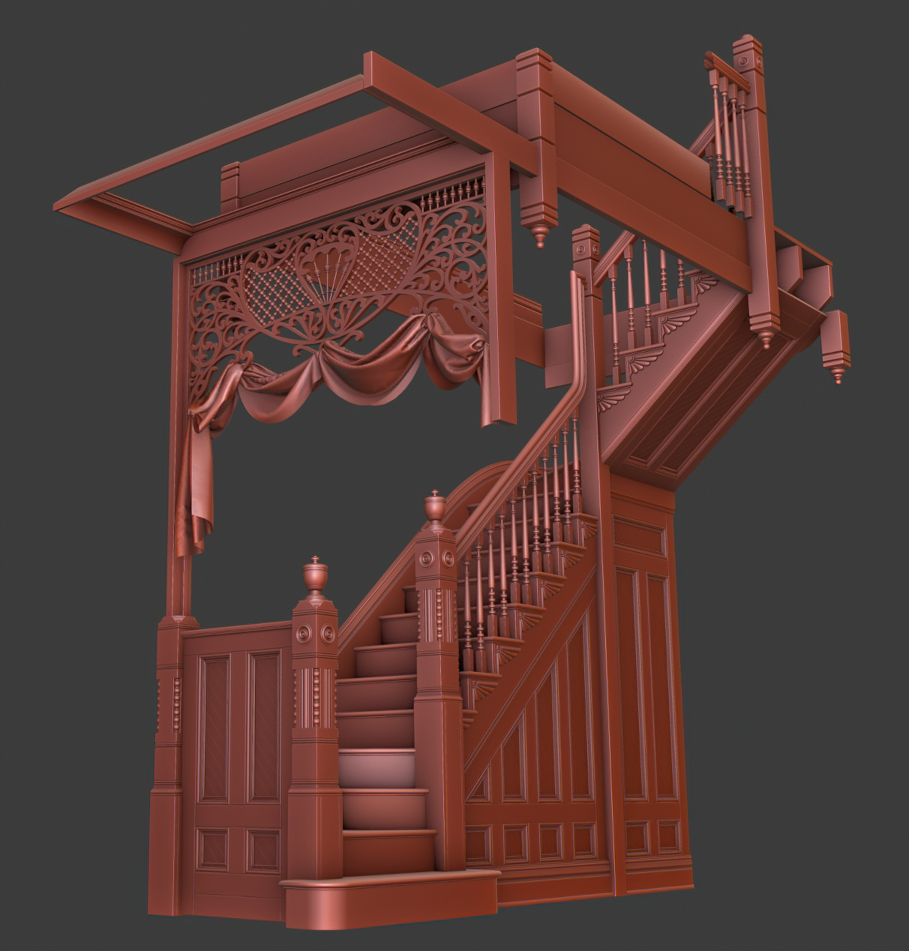
I usually slide it -200m along the X axis to work on it, and the slide it back 200m to check the fit. When I work on sections of it, I just select those parts and isolate the view. It's a huge project with lots of parts, but I've managed to organise my collections (and with nested collections), so it's been surprisingly easy to work on different parts of the house without getting overwhelmed.
Here, it's slid into place, viewed from the top of the stairs:
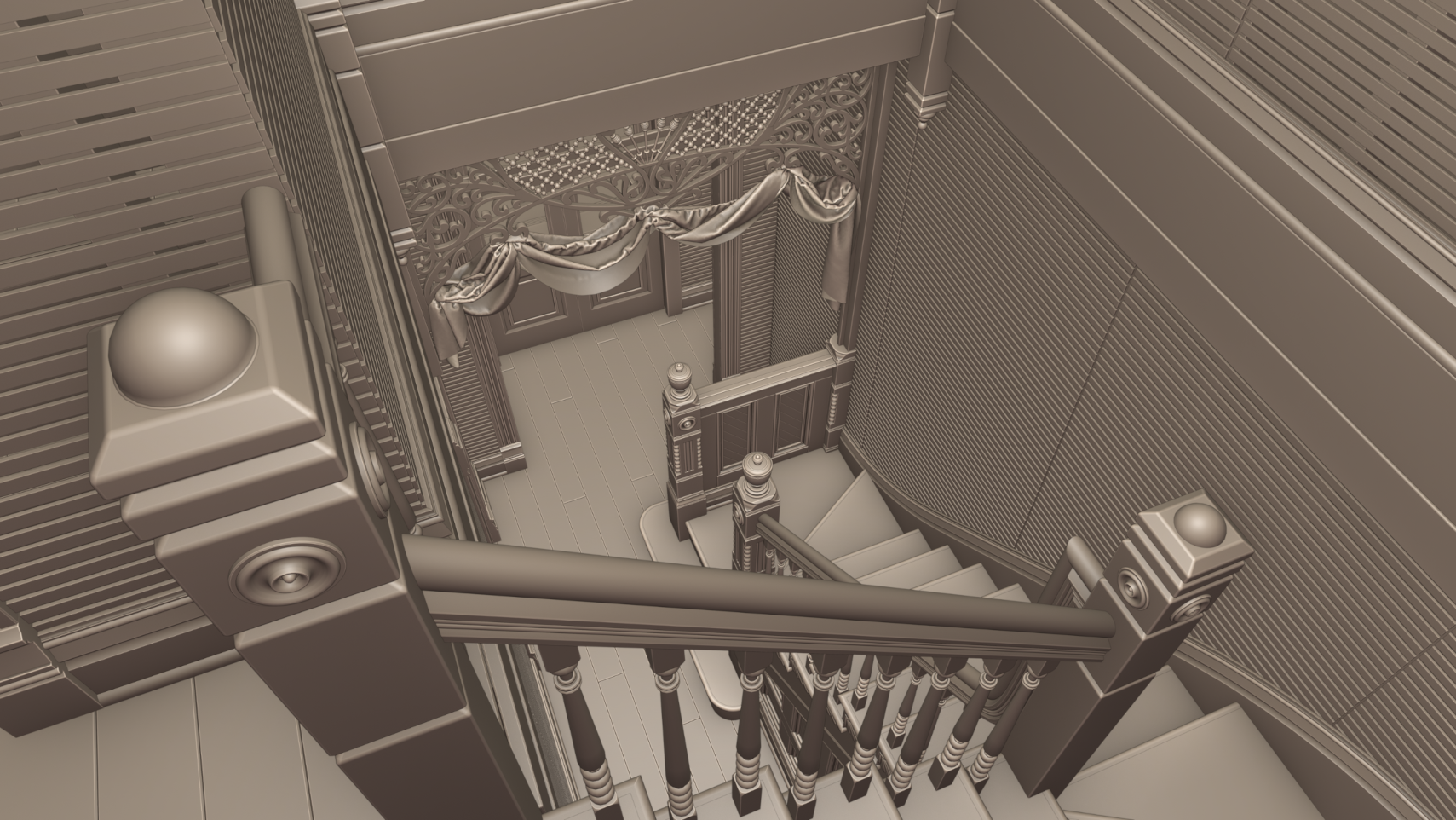
Obviously I haven't plastered and papered the wall yet. :-D Just bare wall lath, door/window casing, and floor/crown moulding.
For the grille structure, I referenced several catalogs from the time period and then drew up the design with curves in Inkscape. Using grease pencil or trying to work with curves in Blender didn't really get me the result I wanted, and it was much easier to just draw the design in Inkscape, and then import the SVG into blender > convert to curve > adjust as needed > convert to mesh. I did a lot of cleanup and then did a rough retopo of it, and then broke it into separate parts (as in RL, it would have been sawn from a pattern but cut into parts for assembly/shipping). It's essentially about 5 or so planes, with a 1 inch solidify modifer. Very slight bevels, which aren't really noticeable, but if viewed close up, you can see the seams where the parts would have been assembled. Maybe a completely pointless detail, but it might come in handy when baking maps in substance painter.
The details are simple.. just wooden dowels with balls and ornaments attached. Moulding catalogs from this era are filled with measurements and designs for these.
For the draped cloth... It's supposed to be a silk chiffon material threaded through hoops on the grille. I decided to use Marvelous Designer rather than Blender cloth simulation, as it had to be pulled and draped. MD isn't really meant for large cloth simulation, but it can do it. It's so easy to use to make clothes, but trying to get it to do stuff other than that is a challenge. So, I had to use some creative methods. I may redo this in the future, as I later figured out a way to pull/loop the cloth through the grille with a simpler method. I'd have to start over on making the cloth, and I kind of burned myself out on it though, and wanted to get back to Blender! :D
My Pureref file is growing:
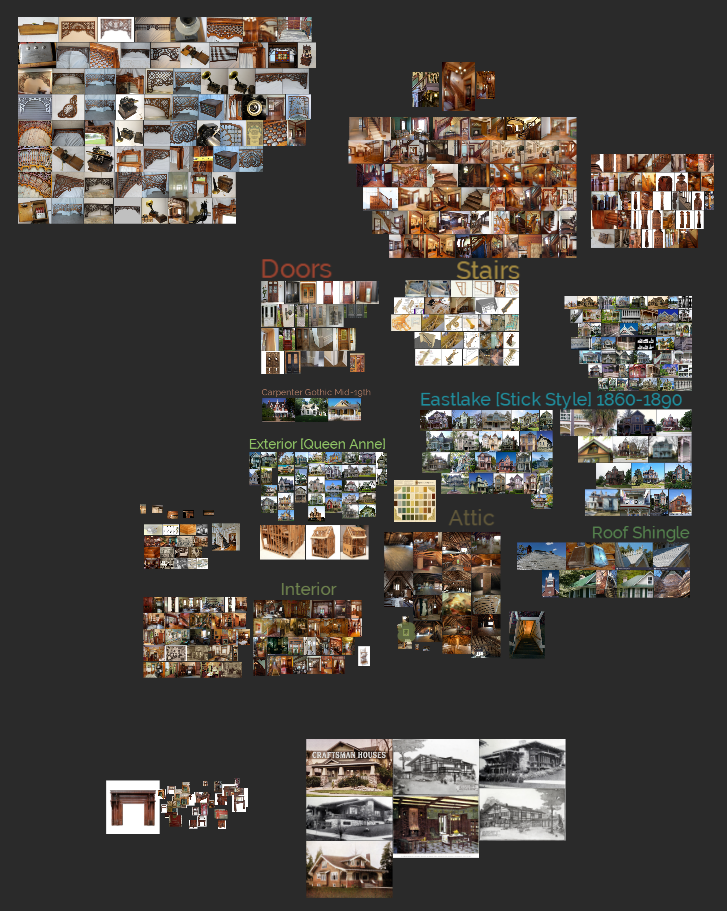
But sometimes you need more...
